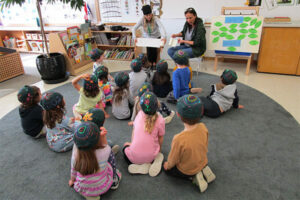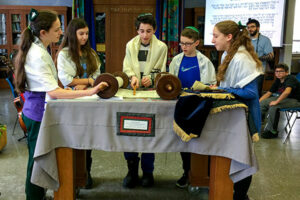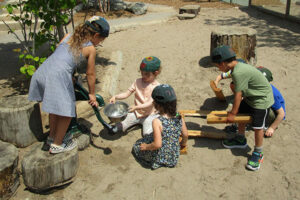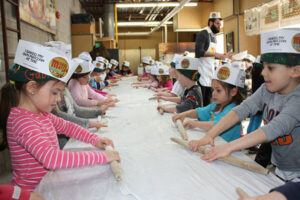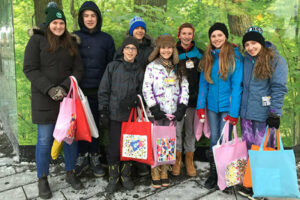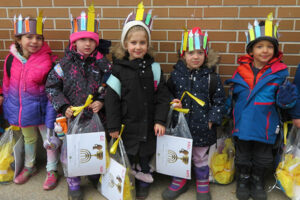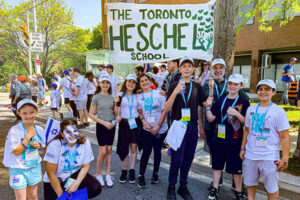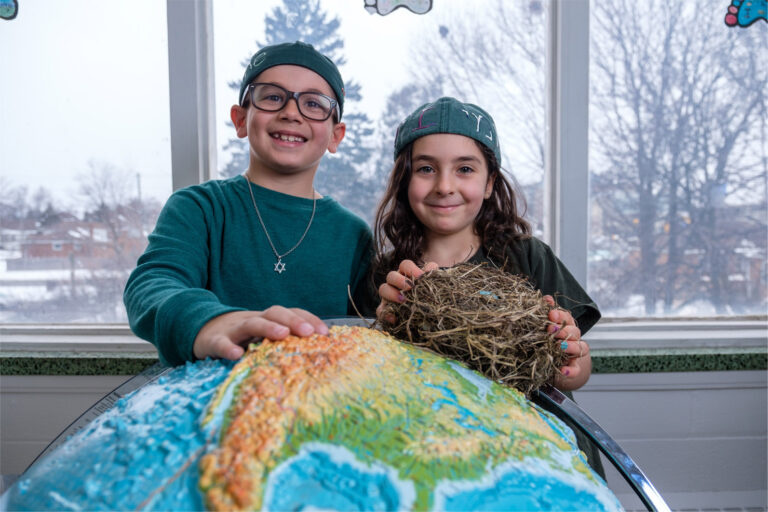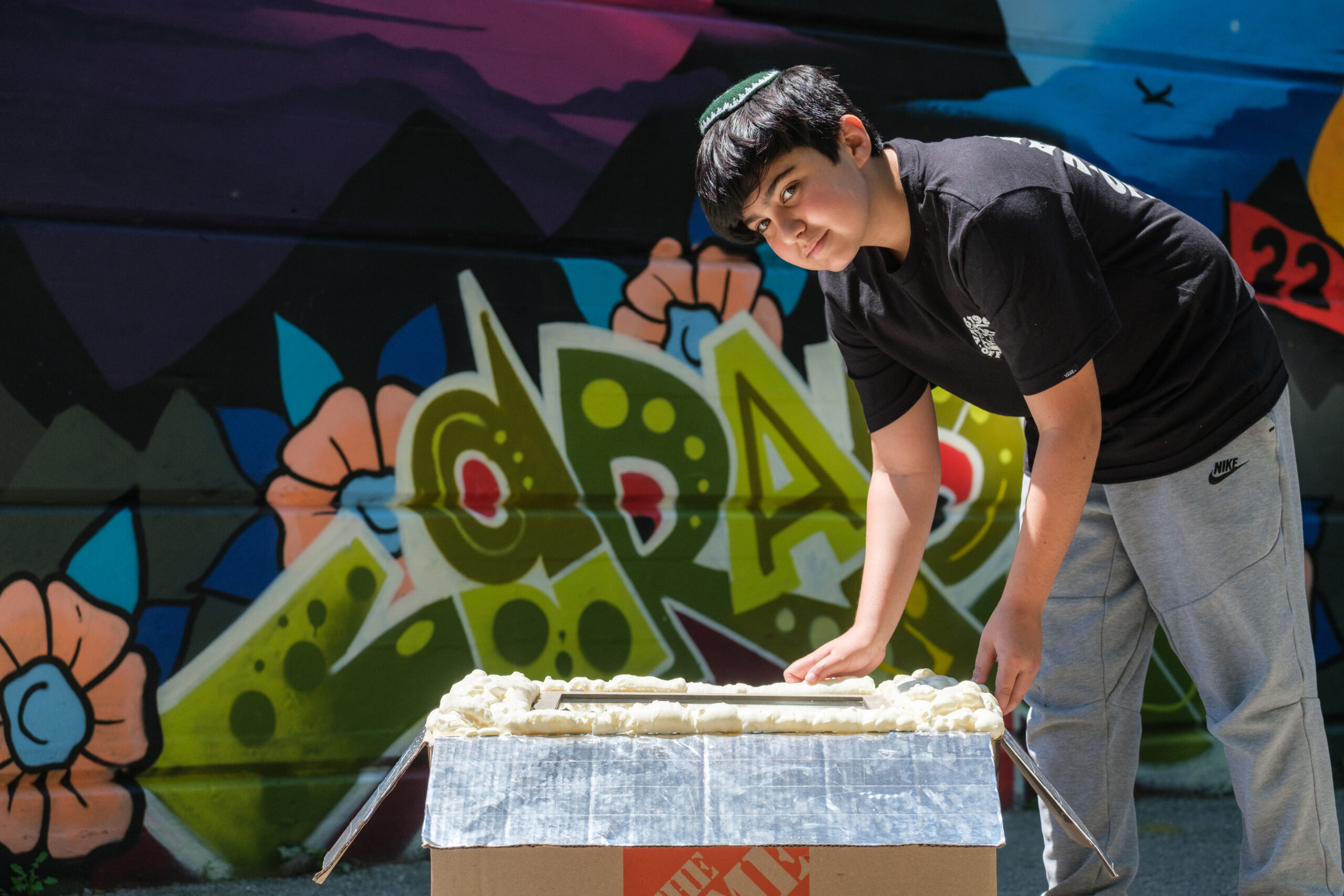
Teaching in a way that brings whatever students are learning “very close” is the secret of The Toronto Heschel School curriculum. We bring teaching close by using the methods and techniques of experiential education: hands-on, multi-sensory learning that quite literally brings the teachings into the mouths, hearts, and hands of our students.
How a school chooses to teach its subjects can create distance from or closeness to the subject being learned. Consider the following examples.
MATH
When a child learns math as a kind of foreign script—with rules and regulations that must be memorized and followed (line this up here, put this number there, cross this out, add that zero, carry that number, punch these numbers into your calculator)—math remains in some sense always distant and a bit of a mystery.
On the other hand, when a child learns math by truly understanding how the base 10 number systems works, how math is used to measure space and time, how it applies to our daily lives and our Jewish lives, and that other civilizations use different number systems altogether, a child begins to see math as a creative tool for engineering, for art, for architecture, and science. Math becomes close to the mind and to the heart.
SCIENCE
When a child learns science by reading a science textbook and answering questions from that textbook, or even by watching Magic School Bus, a child learns that science is a set of given facts—something known by someone else, that must be memorized and learned.
But when a child is offered the opportunity to go outside, explore the ecosystems of the garden, or to look up into the night sky and track the movement of the moon and sun, or to engineer a wind-powered generator or solar heater, a child learns that science is a method, a process of discovering patterns where none were immediately evident, and a child learns to experiment, to build, and to construct. Learning becomes close to the hands and close to the mind.

LANGUAGE ARTS
When a child learns to read a novel through some pre-made novel-study package from this or that publisher, a child learns quickly how to get through the worksheets provided.
On the other hand, when a child learns to read a novel by transcribing it into a play, and performing it, taking on its characters and their lives, a child learns empathy, imagination, expression, and what it means to walk in the shoes of another person—not to mention teamwork, courage, and presentation skills.
JUDAICS
When a child learns Hebrew or Torah or prayer simply by reading texts or learning grammar, a child learns that Judaism is just one more subject among many; but when a child learns Hebrew and Torah and Tefillah through song, dance and drama, and through immersive oral practice, when the language is quite literally in your mouth, then it enters her heart as a living, breathing tradition, creates a sense of belonging and addresses some of the big questions that children ask.
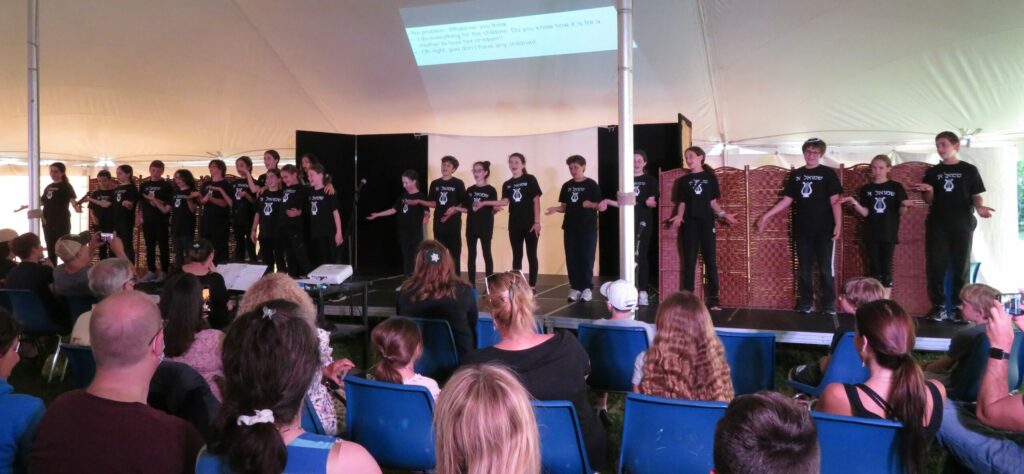
All that we do here at Heschel is designed thoughtfully, carefully, and intentionally to bring learning close, into the mouths, into the hearts and into the hands of our students. It is a method that has led to proven academic success across all disciplines; and more than that, it is a method that offers students a deep sense of understanding, of belonging, and of connection to their community, their history, and their Torah. At Heschel, “how” we teach is just as important as “what” we teach. We bring learning close through experiential education that leads to deeper comprehension, deeper meaning, and deeper appreciation.

